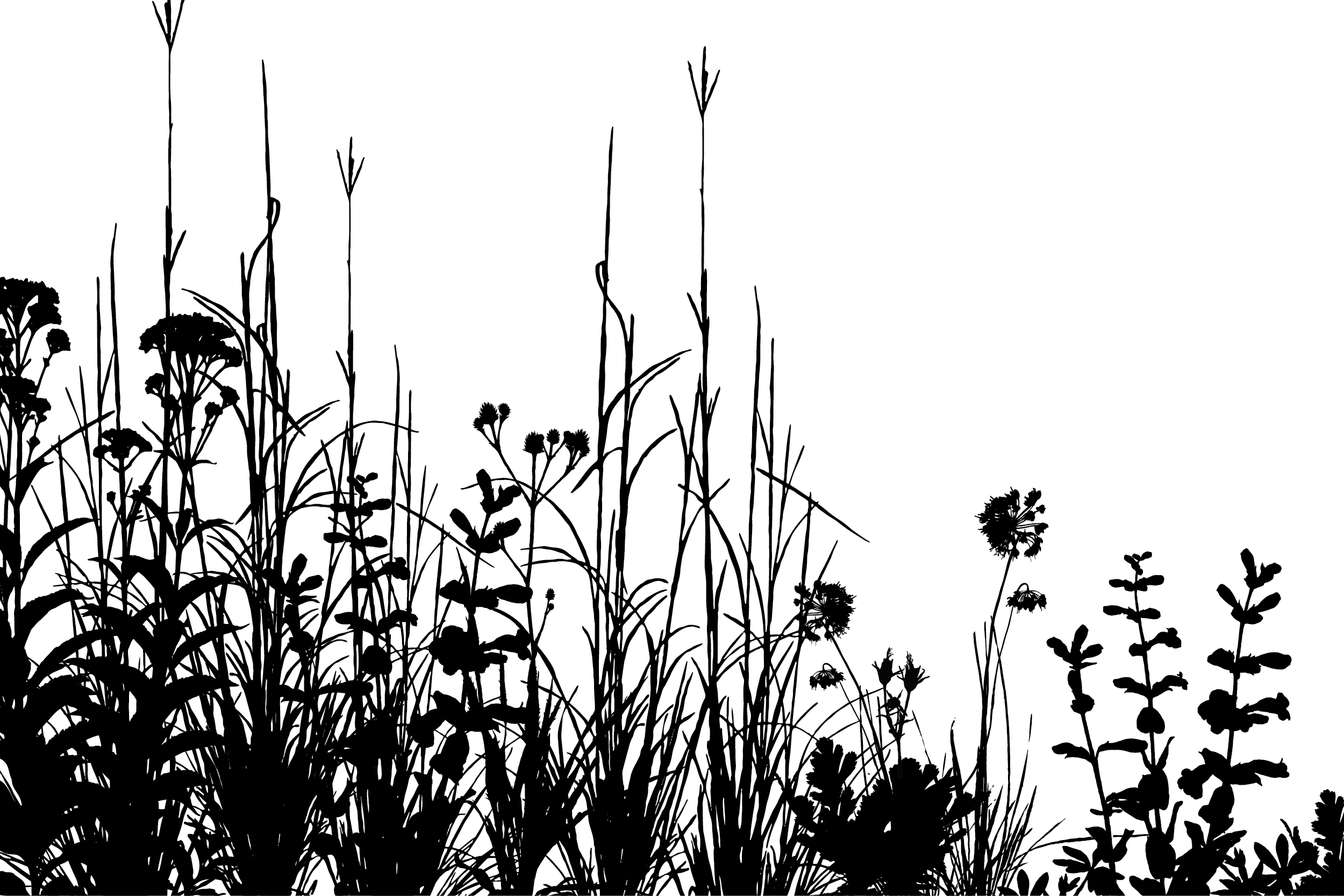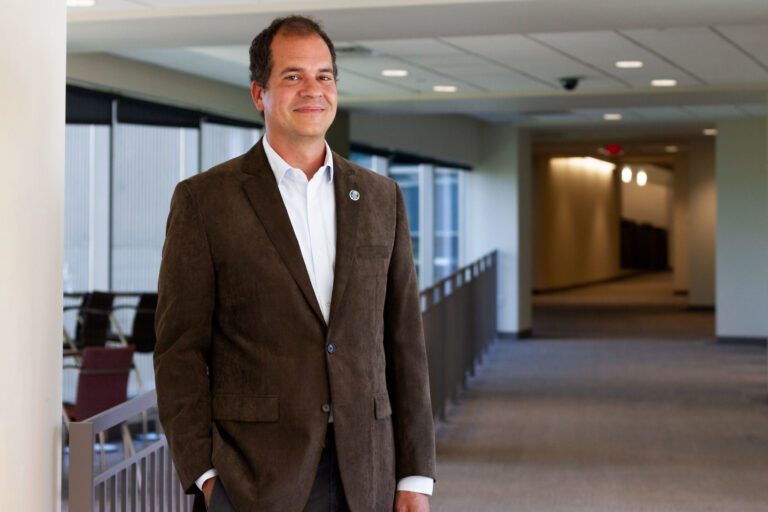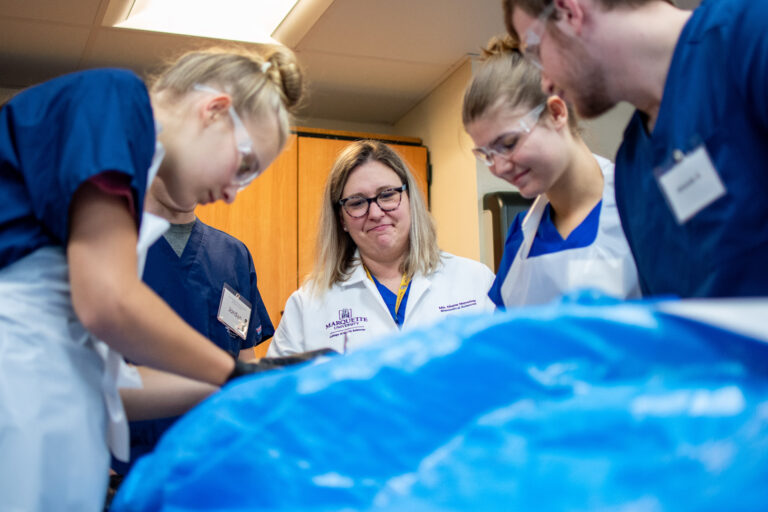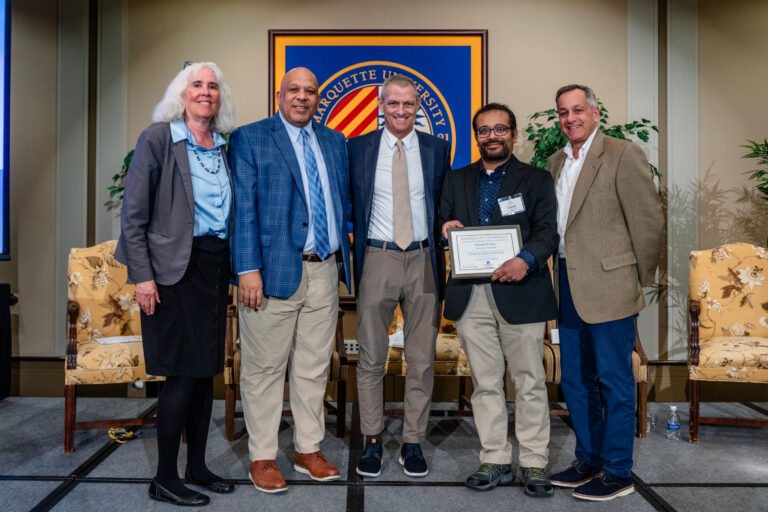If you happen to walk down West Wisconsin Avenue this particular spring day — a beautiful one for April in Milwaukee — you might not think twice about the new landscaping being installed in front of the Alumni Memorial Union. But if you look closely, you may be surprised to see who is holding the shovels.
Digging a hole, a potted blue lupine waiting nearby, is Dr. Paul Gasser, associate professor of biomedical sciences, better known for conducting neurobiological research on addiction funded by $2 million in top-tier NIH grants. A student-led documentary film crew, finished with their shots, has set down their equipment and picked up shovels. Rev. T. Michael McNulty, S.J., a senior member of the Jesuit community and scholar-in-residence at Marquette’s Center for Peacemaking, enthusiastically snaps photos. And a random passerby drops her belongings to lend a quick hand before continuing on her way.
This is no ordinary garden plot: It’s a pocket prairie, and for some on campus, it’s a dream years in the making.
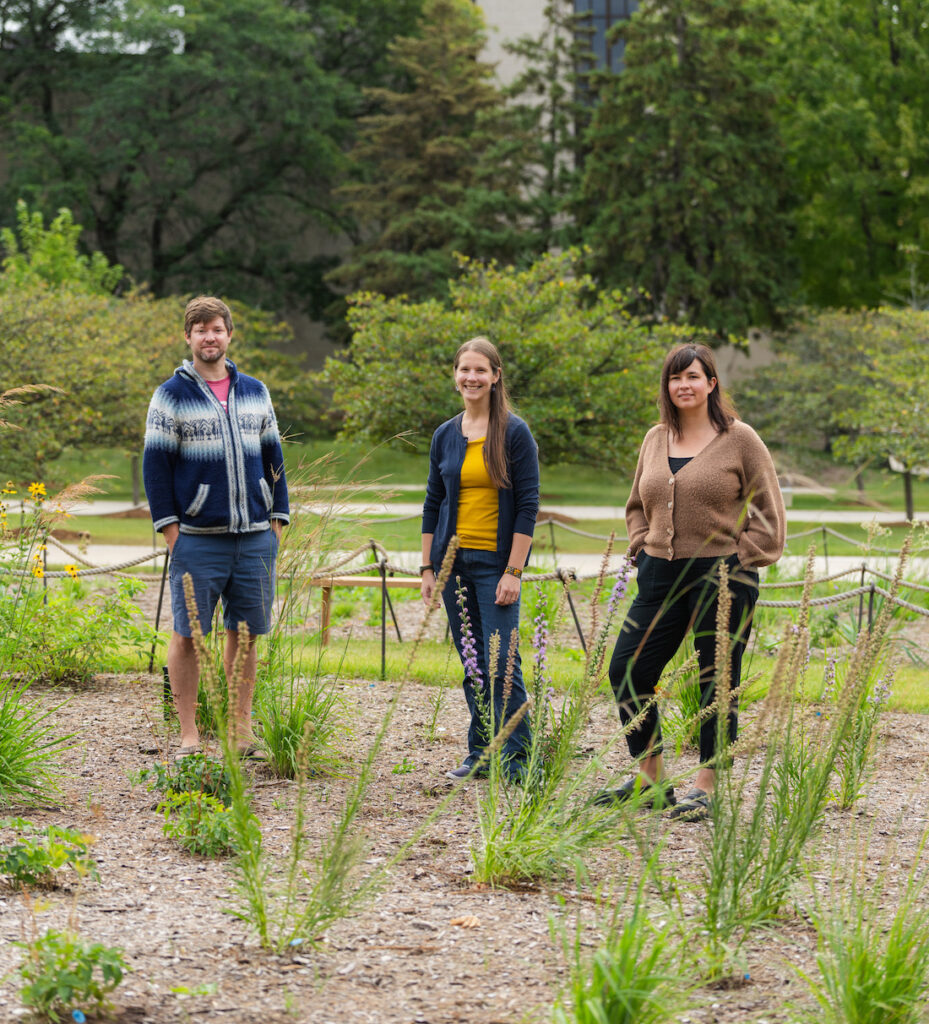
Kirsten Boeh is communications coordinator in the Klingler College of Arts and Sciences. She’s worked on campus for 12 years and has long wished to see a garden of Wisconsin native plants on campus. One day, her friend Dr. Nate Lemoine, assistant professor of biological sciences, stopped by her office to chat. Prairies came up, and they agreed about how great it would be to install one on campus. Lemoine says it was as simple as that. “Well, why don’t we?”
I Dream of Prairie
University campuses are known for their manicured lawns and tidy hedges, an homage to European pastoral ideals of centuries past. But the place that is now Milwaukee was once filled with flora just as stunning as any rose or hydrangea: wildflowers now largely lost from the landscape, not just in the city, but everywhere prairies used to thrive. The fertile soil associated with prairies proved their undoing, leading to an almost complete conversion to agriculture before, in some places, evolving once again into the regional sprawl we see today.
“It’s a history lesson, it’s an ethics lesson and it’s a biology lesson that someone can get all just while walking to class.”
Kirsten Boeh, Klingler College of Arts and Sciences communications coordinator
Boeh and Lemoine reached out to Chelsea Malacara, sustainability and energy management coordinator with Marquette’s Facilities Planning and Management Department, to see what she thought of a plan to reverse course, albeit modestly, with a project demonstrating the beauty and ecological benefits of Wisconsin’s lost native fields. Malacara was in and suggested the team advance a formal proposal to Marquette’s Explorer Challenge, an annual competition initiated in 2014 by President Michael R. Lovell to spark progress on innovative ideas from the campus community that would otherwise go unpursued. Each year, it invites students, faculty and staff to apply for up to $25,000 in seed money — pun not intended, in this case — for projects that advance the university’s strategic plan.
A prairie, it turns out, checks a lot of boxes, with benefits ranging from environmental to social. The idea was a major hit. “I was just talking to Dr. Lovell about it,” Boeh says. “He said this was the highest-rated proposal. Everyone loved it. Everyone is so excited about this project. And every time I talk to someone from the Office of University Relations, it’s the gossip in the office. People are talking about this prairie.”
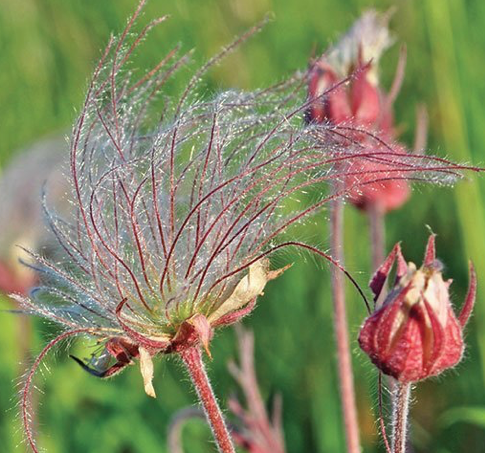
PRAIRIE SMOKE
(Geum triflorum)
Early-blooming and low-growing; fireworks-shaped flowers give way to seed heads resembling smoke.
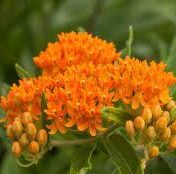
BUTTERFLY FLOWER
(Asclepias tuberosa)
A favorite of monarch butterflies, this and other milkweeds are the only place they’ll lay eggs.
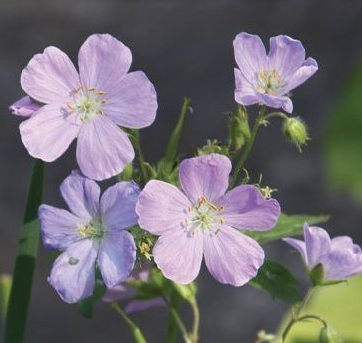
WILD GERANIUM
(Geranium maculatum)
Known for its lovely pinkish-purple blooms; often found in woodland openings.
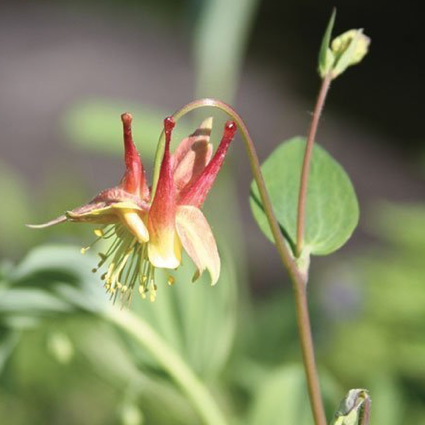
CANADIAN COLUMBINE
(Aquilegia canadensis)
Perched atop dainty lobed leaflets, nodding red and yellow flowers attract hummingbirds.
Of course, the Go Wild team — the small group that’s gone from proposing to managing the prairie — is also thrilled. “It’s so cool and unique that someone whose job is in communications could get seed money to do this,” Boeh says. Then again, the idea of cross-campus collaboration — people working together outside of their usual silos for heightened creativity — is a hallmark of the Explorer Challenge program.
Return on investment is another. “It’s really nice to see the university open to the idea that the return was not going to be monetary,” explains Lemoine. “The soft returns are huge, and we’re already seeing them.” The multiuse space is already being used for teaching and research projects, boosting both the aesthetic qualities and sustainability of a half-acre of campus which, since the demolition of the old Jesuit Residence, had
been open lawn.
Plant a Pocket of Prairie
The prairie currently boasts 750 native plants, which were planted in two stages. Boeh drafted the landscape plan for the first 250, tapping into experience from her teen years working in her family’s plant nursery. Lemoine added a biodiversity experiment that fits into his research program (see “The Root of the Matter” illustration and caption below), plotting out precise locations for the next 500.
Facilities hired a contractor to remove the sod, and the first batch of plants, from Johnson’s Nursery in Menomonee Falls, went in in early April. The second batch came from a nursery in Minnesota, which Boeh, her husband and Lemoine visited by weekend road trip before another group planting day in June.
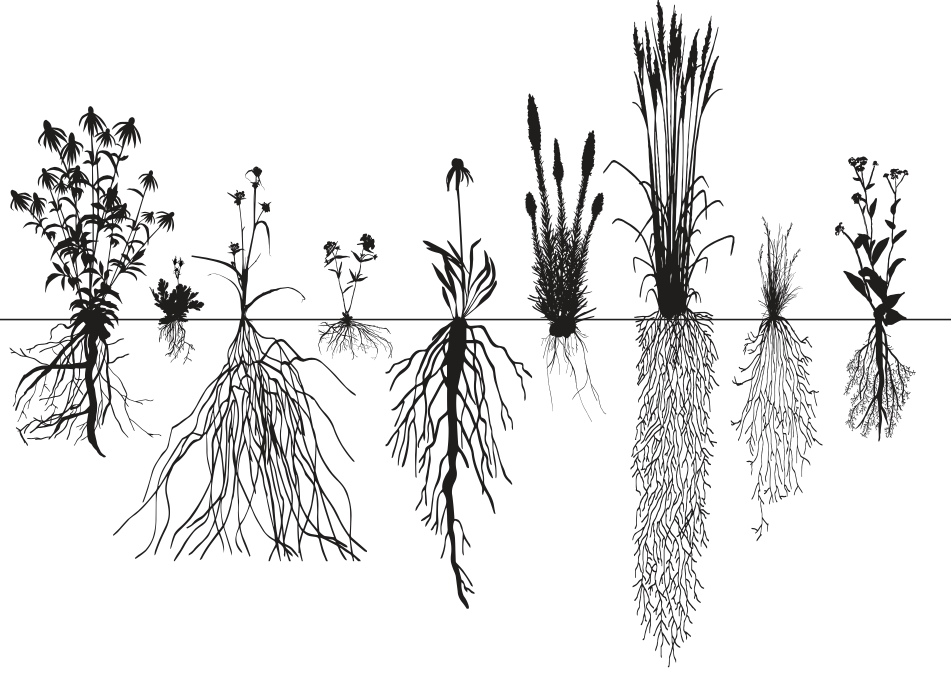
Illustration by Kirsten Boeh.
It’s been a team effort, with students, staff, faculty and even passersby from the community lending a hand. And that’s intentional: “When people put in the work and tend to our natural ecosystems or natural spaces, they tend to care about them a lot more,” Malacara says.
The Go Wild team hopes that the prairie is just the beginning and that over time, more of Marquette’s ample lawn space will be converted back to what lived here before there was even a city. Over time, these spaces will use fewer resources, reducing the need for mowing, fertilizing and watering.
“Even if somebody doesn’t know everything that’s going on here, just by nature of the location, something is going to catch their eye,” Boeh says. “Something that brings a smile to their face, that gives them a broader perspective of the world than a grass monoculture would. It’s a history lesson, it’s an ethics lesson and it’s a biology lesson that someone can get all just while walking to class.”

